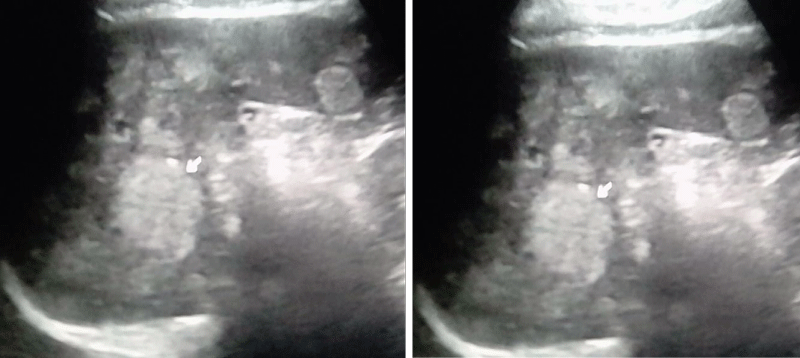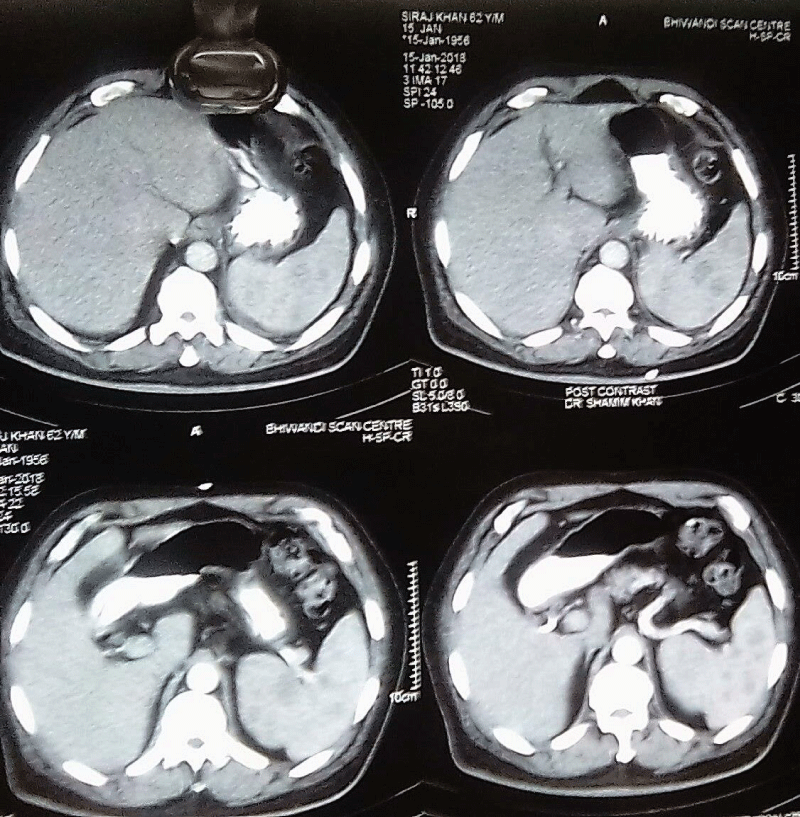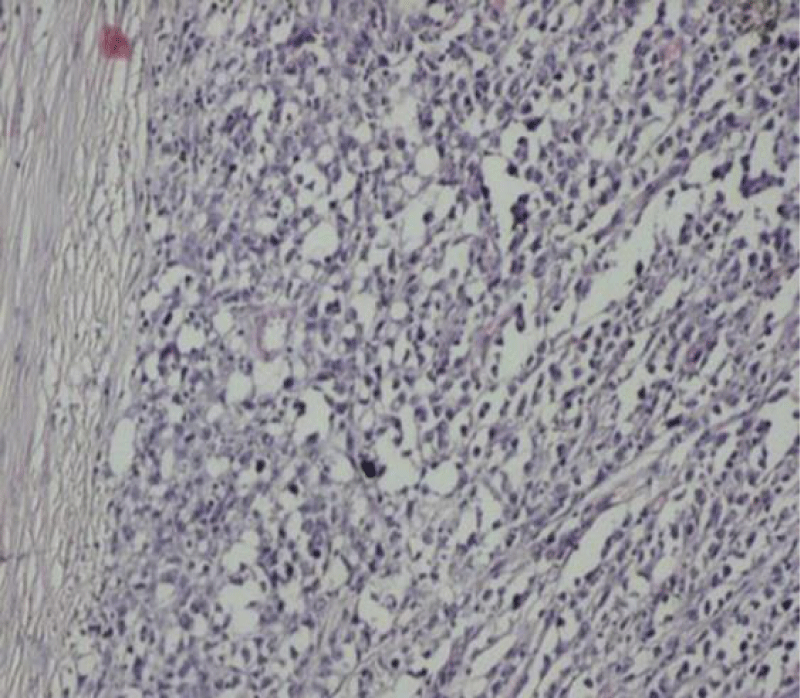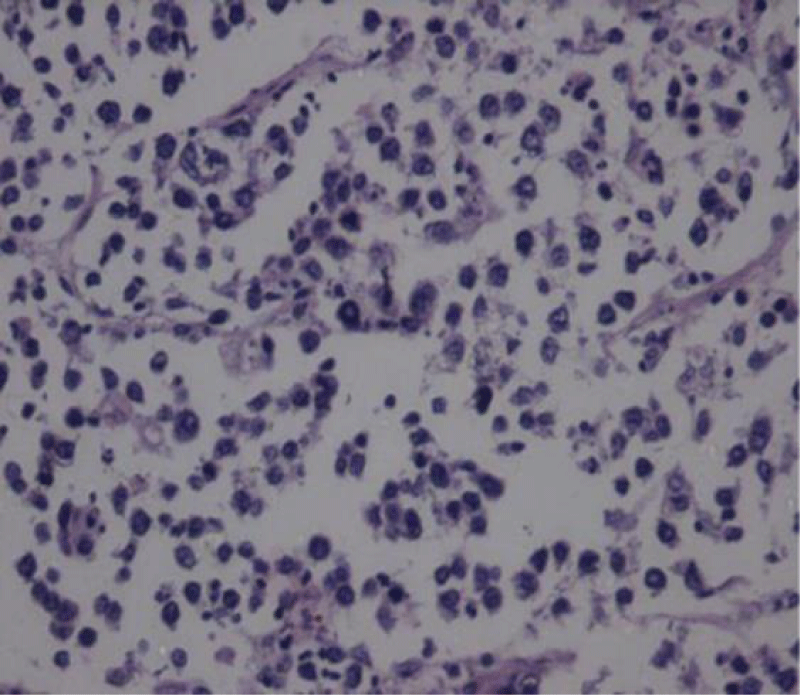Maheshgir S Gosavi*
Siraj Hospital, Senior Consultant, Thane, India
*Address for Correspondence: Maheshgir S Gosavi, Siraj Hospital, Vanjarpatti Naka, Bhiwandi, Thane, India, Tel: +910-252-225-3200/+918-693-027-439; E-mail: [email protected]/[email protected]
Dates: 15 February 2018; Approved: 27 March 2018; Published: 29 March 2018
Citation this article: Gosavi MS. Case of Primary Splenic Lymphoma in a Diabetic Patient. Int J Case Rep Short Rev. 2018;4(1): 015-019.
Copyright: © 2018 Gosavi MS. This is an open access article distributed under the Creative Commons Attribution License, which permits unrestricted use, distribution, and reproduction in any medium, provided the original work is properly cited.
Keywords: Transvaginal sonography; Live tubal ectopic; Laparoscopic salphingostomy
Abstract
Primary Splenic Lymphoma is a rare neoplasm of the spleen, probably comprising less than 2% of all the lymphomas and 1% of all the non-Hodgkin’s lymphomas. The true incidence of the disease is difficult to estimate because of the variable definitions of the disease. Das Gupta et al. proposed that the diagnosis of Primary Splenic Lymphoma could be made when the disease was confined to the spleen or the hilar lymph nodes and that no recurrence of the disease was evident for at least 6 months after splenectomy. The case which is reported here met these strict criteria. The patient is in complete remission one year after the diagnosis. Splenectomy is considered as the most effective Therapy for Primary splenic lymphoma. In this article, we present a rare case of Primary splenic lymphoma in a 60 years old male diabetic patient. The histopathological evaluation of the splenectomy specimen revealed low grade non-Hodgkin’s lymphomas. The purpose of this article was to report this rare occurrence of Primary Splenic Lymphoma.
Abbreviations
PSL: Primary Splenic lymphoma; NHL: Non-Hodgkin’s lymphoma; USG: Ultrasonography; DLBCL: Diffuse Large B cell Lymphomas; CHOP: Regimen in Non-Hodgkin’s Lymphoma Consists of Cyclophosphamide Hydroxydaunorubicin Oncovin Predinisone
Introduction
Primary Splenic Lymphomas (PSL) are also known as Primary Malignant Lymphomas of the Spleen .They comprise 2 % of all Non-Hodgkin Lymphomas [1]. Most of the splenic lymphomas are of B cell origin. Diffuse Large B cell Lymphomas (DLBCL), which can present extra-nodal in more than 40% of cases often occur in the spleen primarily with the incidence being 22.4-33.3%.Primary Splenic lymphoma is a rare condition which occurs in less than 1% of all the non-Hodgkin’s lymphomas [2,3].The spleen may be the primary site of the lymphoma or it may be an element of disseminated malignancy .PSL is difficult to diagnose, as there is no standard definition and diagnostic criteria for it. Das Gupta et al. proposed that this diagnosis could be made when the disease was confined to the spleen or the hilar lymph nodes. No recurrence of the disease is evident for at least 6 months after splenectomy [4]. It usually presents with non specific symptoms like left upper quadrant pain or discomfort due to splenomegaly, pyrexia, weight loss, night sweats, and weakness. In this article, we are reporting a case of PSL in 60 years old male diabetic patient who presented with splenomegaly and non-specific symptoms.
Case Presentation
A 60 year old known diabetic male patient with presented with history of pain abdomen since 4 months, situated in the left upper abdomen which was a dragging type of pain. There was also history of fever on and off since the last 4 months without chills and rigors. There was no history of weight loss, loss of appetite, vomiting, bleeding episodes, bony pains, and melena. Examination revealed splenomegaly 3 cm below the left costal margin. There was no evidence of hepatomegaly or free fluid in the abdomen. Systemic examination was unremarkable except for anemia. There was no generalized lymphadenopathy. Basic blood investigations. The haemogram showed Hb of 8 g/dl, a total count of 10,900 (N- 40%, L-55%, E- 4%, M-1%) and a platelet count of 1, 20,000 cells/cu mm. His peripheral blood smear showed normocytic normochromic anaemia without any abnormal or atypical lymphocytes. His blood was negative for the malaria parasite. Blood sugar levels fasting was 150 mg/dl and post prandial was 210 mg/dl. Coagulation profile and serum chemistries were also within normal limits. Viral markers were negative.
Ultrasound showed a spleen was moderately enlarged and measures 16 cm, there were multiple ill-defined hyper echoic lesions in spleen. Lesions range from 3.5 x 2.0 cm to 1.5 x 1.0 cm in size. CT scan showed a splenomegaly with multiple heterogeneous enhancing hypodense lesions are noted in spleen. Lesions range from 3.5 x 2.0 cm to 1.5 x 1.0 cm in size. Bone marrow examination and chest radiographs (done to rule out systemic involvement by lymphoma) were normal. Differential Diagnosis of multiple hyperchoic lesions on USG and hypodense lesions on ct could be lymphoma, hemangiomas, and granulomas.
Diagnosis of primary tumour of the spleen was made and patient was posted for surgery. An exploratory laparotomy was performed, which showed splenomegaly without any evidence of liver or abdominal lymph node involvement. Gross examination of the specimen showed a multiple greyish white lesions in spleen Histopathological examination made a diagnosis of Non-Hodgkin’s Lymphoma of the spleen probably of B cell origin. Immunohistochemical studies showed positivity for LCA (leukocyte common antigen) [++++], CD 20 [+++] and CD 10 [+] with negativity to CD 30, CD 5 and Cytokeratin (CK) favoring a diagnosis of Diffuse large B cell Lymphoma of Spleen.The patient is currently undergoing chemotherapy with CHOP regimen and is found to be symptom free on follow up.
Discussion
Primary Splenic lymphoma is a rare disorder with an incidence of < 1% [5]. Primary splenic lymphoma has been described both in context of Hodgkin’s and Non-Hodgkin’s lymphoma. The Non-Hodgkin’s type consists of an extra-nodal biologically virulent cancer. Individuals with diabetes are believed to have altered immune function and to be in a relatively immunodeficient state which may contribute to the pathogenesis of lymphoproliferative disorders, such as NHL Furthermore, there is a growing body of evidence linking insulin and IGF-I to cell proliferation, lack of apoptosis in cells, and cell metastasis-phenomena involved in the development and progression of malignancies. In parallel with the increasing incidence of NHL, the prevalence of diabetes has increased over the last few decades. Diabetes has been associated with increased risk of several malignancies, including endometrial, ovarian, breast, gallbladder, liver, colonic, and pancreatic cancer, but its relationship with NHL is unclear [6].
The majority of patients with type 2 diabetes are obese; therefore, the observed association between diabetes and NHL may be mediated by metabolic derangements associated with the obese state. It is increasingly recognized that excess body fat is associated with increased risk of common and less common malignancies .A recent meta-analysis also found an increased risk of NHL with excess body weight. The increase in NHL associated with excess body weight might be mediated by changes in circulating adipocytokines, such as adiponectin and leptin. These cytokines are thought to be involved in immunity and inflammation and can alter the balance between cell proliferation and death [6].
Type 2 diabetes mellitus is a condition characterized by insulin resistance and pancreatic ß-cell dysfunction. There is an established link between insulin resistance and inflammation. Although proinflammatory factors, such as Tumor Necrosis Factor-α (TNF-α), promote insulin resistance, insulin also acts as a mediator for the inflammatory response. Insulin attenuates the up-regulation of hepatic acute-phase protein gene expression induced by inflammatory cytokines Studies show that insulin might regulate the synthesis of cortisol binding globulin, a liver protein that is closely involved in inflammatory events. Several recent human and animal studies provide further evidence of the antiinflammatory action of insulin. Therefore, impaired insulin action may have implications for lymphogenesis. Reports of excess non-Hodgkin lymphoma risk among diabetic patients date back to two decades ago .In recent years, the number of studies that have examined the relation between type 2 diabetes mellitus and malignancy has surged because of an increased interest in hypotheses linking hyperinsulinemia to malignancy. However, findings on diabetes and non-Hodgkin lymphoma have been inconsistent. As the incidences of type 2 diabetes mellitus and non-Hodgkin lymphoma continue to rise, the association between type 2 diabetes mellitus and non-Hodgkin lymphoma warrants closer examination [7].
PSL has been defined in a number of ways. Das Gupta et al. [8] defined PSL as a lymphoma involving only the spleen and the splenic hilar lymph nodes; the diagnosis of PSL being made if isolated splenomegaly occurs in the absence of any other localized tumors, particularly in the liver or the para-aortic or mesenteric lymph nodes. Before confirming the diagnosis of PSL, a 6-month relapse-free period should exist after removal of the spleen. Skarin et al. [9] suggested that the diagnosis of PSL can be made if splenomegaly is a predominant feature in any lymphoma involving the spleen. Kraemer et al. [10] reserved the diagnosis of PSL for patients with splenomegaly, cytopenia of at least two hematologic cell lines and the absence of peripheral adenopathy. Kehoe et al. [11] defined PSL as NHL arising primarily in the spleen or as NHL principally confined to the spleen and its local lymph nodes. In this report, the entity fits into the definitions given by Skarin et al. and Kehoe et al.
These patients usually present with low grade fever, night sweats and symptoms related to splenomegaly that includes left upper quadrant pain. In some cases, the patients present as Pyrexia of Unknown Origin (PUO).There may be other specific symptoms resulting from direct invasion of the pancreas, stomach, diaphragm, colon or greater omentum [12] including tumor fistulization or rupture. Organ size should not be used to assess splenic involvement in patients with lymphoma, since the spleen can be normal in size despite tumor infiltration [13]. There are various clinical presentations described:
• Asymptomatic patients with isolated splenomegaly
• Patients in whom splenomegaly is associated with blood count variations
• Constitutional symptoms with abdominal pain secondary to splenomegaly.
In our report, the patient was symptomatic at presentation.
Ahmann [14] classified the gross appearance of PSL into four categories namely homogenous enlargement without masses, miliary masses, 2-10 cm neoplasms and large solitary tumors. In our case, there were multiple masses ranging from 2-5 cm size. Ahmann et al. [14] grouped PSL into three stages depending on the extent of the disease determined either at surgery or by other studies in the immediate postoperative period. 1 Stage I refers to those patients with tumor is limited to the spleen only. Stage II patients have involvement of the nodes in the splenic hilum, while stage III patients have involvement of the liver or lymph nodes beyond the splenic hilum. In our case, the patient belonged to stage II.
The most common histological subtypes (seen in more than 50 % of cases) is that of low-grade lymphocytic lymphoma (well differentiated small cell variant or with lymphoplasmocytic/ lymphoplasmocytoid differentiation) or intermediate-grade lymphoma (diffuse or nodular mantle-zone lymphoma) [15].
Diffuse Large B-Cell Lymphoma (DLBCL) of spleen accounts for about 1/3 of all primary splenic lymphomas [16]. DLBCL of spleen usually presents as single or multiple confluent nodules with majority being derived from the white pulp and is considered an aggressive neoplasm. The common age of occurrence is in the sixth and seventh decade. There is usually a single tumor mass, which is large and occupies more than 50% of the spleen; this pattern however, is not specific to primary DLBCL as secondary involvement by DLBCL will have the same pattern. Bone marrow involvement is usually negative at the time of presentation [17]. The most common laboratory finding seen in these patients is anemia along with increased ESR and increased LDH levels.
On imaging, DLBCL manifests as splenomegaly associated with a well-defined hypoechoic mass [18]. Although majority of them are hypoechoic, rare echogenic lesions or bright echoes due to calcifications or gas may be detected. In our case it was presented as multiple hyper echoic lesions so its rare presentation. Differential diagnosis of multiple hyperechoic spleen lesions are hemangioma, hamartomas, metastasis and rarely lymphoma. Anechoic areas generally suggest liquefactive necrosis and in the presence of fever, it may be difficult to distinguish from splenic abscess. Rim enhancement may rarely be encountered indicating pseudo capsule formation or adjacent compressed parenchyma. Hence our differential diagnosis on USG was hemangioma, granulomas, lymphoma, and hamartomas [19].
Splenic lymphoma is categorised on imaging data based on the gross pathological presentation in the following manner:
Type 1- homogeneous enlargement
Type 2 - miliary nodules
Type 3- multifocal masses of varying size
Type 4 - solitary large mass.
Diffuse, uniform infiltration is the most common pathological form of splenic lymphoma, nevertheless it presents as normal or only shows splenomegaly on imaging. Although these are the most common imaging findings, splenomegaly is not diagnostically specific because the spleen can be normal in size despite tumor infiltration or may be enlarged without neoplastic involvement due to a reactive process. Because it identifies increased glucose metabolism by tumor cells, PET-CT is superior to CT in evaluating splenic involvement regardless of morphology. However, in our study, 75% (12 out of 16) of splenic lesions manifested as a solitary mass on CT (type 4), indicating that PSL usually presents as a mass rather than as splenomegaly alone. Our result is also consistent with previous reports, although the absence of other patterns of involvement may be explained by operative selection bias and the unavailability of PET-CT for PSL. Primary splenic lymphomas are best recognized on contrast-enhanced CT scans. Hypo-enhancing foci with diameters of less than 1 cm may be apparent after the administration of intravenous contrast material. In cases with multiple masses, many small lesions less than 1 cm were clearly observed in addition to the large mass [20].
Post-treatment differentiation of residual disease or relapse from either fibrosis or necrosis can be accomplished using whole body F-Deoxyglucose (FDG) Positron Emission Tomography (PET). Malignant diseases most commonly involving the spleen are principally F18-FDG avid diseases, including lymphoma and metastases from malignant melanoma, lung cancer, ovarian cancer, and gastrointestinal malignancies. In contrast, the common benign splenic lesions, hemangiomas and hamartomas are not expected to show increased F18-FDG uptake. F18-FDG PET/CT can also identify additional unsuspected sites of disease, which may be more accessible for biopsy. This may obviate the need to biopsy the spleen itself [12]. FDG PET/CT has an accuracy of almost 100 % in diagnosing primary splenic involvement during initial staging whereas CT alone has an overall accuracy of 57 % [21].
Fine needle aspiration biopsy of the spleen, although not widely accepted, is gaining renewed interest. Core biopsy, obtained with a 21 or 22 gauge needle or even laparoscopically, has also been used successfully for histological identification of PSL subtype. Ultrasound (US) guided fine-needle aspiration biopsy or cytologic examination has been shown to be useful in the diagnosis of splenic involvement by lymphoma. In the spleen, however, malignant lymphocytes obtained in this manner can be distinguished from normal lymphocytes only with difficulty, and histologic confirmation may be required. This is possible using US-guided tissue core biopsies that allow histologic and immunologic classification [12].
DLBCL requires CHOP regimen in the adjuvant setting [2]. Chemotherapy with or without radiotherapy after splenectomy prolongs survival of PSL [22].The important prognostic factors include the stage of disease at presentation and the tumour type with DLBCL having a more aggressive course. Also, failure to correct thrombocytopenia after splenectomy is a poor prognostic factor [22]. The treatment of choice in majority of these isolated splenic lymphomas is splenectomy. Splenectomy has been proposed as a therapeutic intervention, with acceptable morbidity and mortality rates. Besides, operation induces significant reversal of haematological abnormalities and once the hematological response is achieved, results appear to be sustained for several months, permitting systemic chemotherapy if necessary. In addition, splenectomy may introduce a prolonged period of disease control and nodal regression, followed by significant favourable survival. Early splenectomy eliminates the possibility of local relapse and prevents continuous neoplastic dissemination from the primary site Splenic irradiation is preferred in cases of inoperable neoplasm’s leading to temporary shrinkage of the spleen and progressive reduction of its size [23].
Conclusion
Primary Splenic Lymphoma is a very rare condition, often presenting with non-specific constitutional symptoms, splenomegaly. Most often, the diagnosis is made after the histopathological evaluation of the splenectomy specimen. A thorough clinical examination and investigation are mandatory to rule out the disease in other organs, including the liver, bone marrow and the lymph nodes. Diabetes especially type 2 is associated with increased risk of Non Hodgkins lymphoma. Splenectomy is the most effective therapy for Primary Splenic Lymphoma.
Acknowledgements
The author reported no conflict of interest and no funding was received on this work. The author would like to thank the pathologists, surgeon who provided very important feedback with regard to the clinical aspect of this patient’s condition. They contributed significantly to the patient being promptly diagnosed and receiving a high standard of care.
References
- Doshi K, Stanciu J, Cervantes J, Rodrigues L, Gintautas J, Alwani A. Splenic Non-Hodgkin’s lymphoma presenting as recurrent kidney stones-an incidentaloma. Proc West Pharmacol Soc. 2008; 51: 55-57. https://goo.gl/hB6A2t
- Iannitto E, Tripodo C. How I diagnose and treat splenic lymphomas. Blood. 2011; 117: 2585-2595. https://goo.gl/WdZ9eQ
- Healy NA, Conneely JB, Mahon S, O'Riardon C, McAnena OJ. Primary splenic lymphoma presenting with ascites. Rare Tumors. 2011; 3: 25. https://goo.gl/SBEzGK
- Han SM, Teng CL, Hwang GY, Chou G, Tsai CA. Primary splenic lymphoma which was associated with haemophagocytic lymphohistiocytosis which was complicated with splenic rupture. J Chin Med Assoc. 2008; 71: 210-213. https://goo.gl/xswqo5
- Wu CM, Cheng LC, Lo GH, Lai KH, Cheng CL, Pan WC. Malignant lymphoma of spleen presenting as acute pancreatitis. World J Gastroenterol. 2007; 13: 3773-3775. https://goo.gl/ZEpQr7
- Mitri J, Castillo J, Pittas AG. Diabetes and risk of Non-Hodgkin's lymphoma: a meta-analysis of observational studies. Diabetes Care. 2008; 31: 2391-2397. https://goo.gl/w8FVjk
- Chao C, Page JH. Type 2 Diabetes Mellitus and Risk of Non-Hodgkin Lymphoma: A Systematic Review and Meta-Analysis Am J Epidemiol. 2008; 168: 471-480. https://goo.gl/P8AbVA
- Dasgupta T, Coombes BC, Brasfield RD. Primary malignant neoplasms of the spleen. Surg Gynecol Obstet. 1965; 120: 947-960. https://goo.gl/rmQUr4
- Skarin AT, Davey FR, Moloney WC. Lymphosarcoma of the spleen. Arch Intern Med. 1971; 127: 259-265. https://goo.gl/gJzHYj
- Kraemer BB, Osborne BM, Butler JJ. Primary splenic presentation of malignant lymphoma and related disorders- a study of 49 cases. Cancer. 1984; 54: 1606-1619. https://goo.gl/wiVM7n
- Kehoe J, Straus DJ. Primary lymphoma of the spleen: Clinical features and outcome after splenectomy. Cancer. 1988; 62: 1434-1438. https://goo.gl/QZdMnn
- Cavanna L, Artioli F, Vallisa D, Di Donato C, Berte R, Carapezzi C, et al. Primary lymphoma of the spleen. Report of a case with diagnosis by fine needle guided biopsy. Haematologica. 1995; 80: 241-243. https://goo.gl/5fNsiW
- Paes FM, Kalkanis DG, Sideras PA, Serafini AN. FDG PET/CT of extra-nodal involvement in Non-Hodgkin lymphoma and Hodgkin disease. RadioGraphics. 2010; 30: 269-291. https://goo.gl/3Xa9wf
- Ahmann DL, Kiely JM, Harrison EG, Payne WS. Malignant lymphoma of the spleen. Cancer. Cancer. 1966; 19: 461-469. https://goo.gl/A4Y6ye
- Gobbi P, Grignani G, Pozzetti U, Bertoloni D, Pieresca C, Montagna G, et al. Primary splenic lymphoma: does it exist? Haematologica. 1994; 79: 286-293. https://goo.gl/TZfTDF
- Torlakovic E: Bone Marrow Workshop Prague 2012.
- Jillian L VanVliet. Primary diffuse large B cell lymphoma of the spleen. Journal of Diagnostic Medical Sonography. 2010; 26: 147-149. https://goo.gl/DzWmfd
- Metser U, Miller E, Kessler A, Lerman H, Lievshitz G, Oren R, et al. Solid splenic masses: Evaluation with F18-FDG PET/CT. J Nucl Med. 2005; 46: 52-59. https://goo.gl/uQscc9
- Abbott RM, Levy AD, Aguilera NS, Gorospe L, Thompson WM. From the archives of the AFIP: primary vascular neoplasms of the spleen: radiologic-pathologic correlation. Radiographics. 2004; 24: 1137-1163. https://goo.gl/odp67R
- Li M, Zhang L, Wu N, Huang W, Lv N. Imaging findings of primary splenic lymphoma: A review of 17 cases in which diagnosis was made at splenectomy. PLoS One. 2013; 8: 80264. https://goo.gl/zzMbfk
- Kashimura M, Noro M, Akikusa B, Okuhara A, Momus S, Miura I, et al. Primary splenic DLBCL manifesting in red pulp. Virchows Arch. 2008; 453: 501-509. https://goo.gl/26HZ4a
- Kim JK, Hahn JS, Kim GE, Yang WI. Three cases of diffuse large B-cell lymphoma presenting as primary splenic lymphoma. Yonsei Med J. 2005; 46: 703-709. https://goo.gl/vaUFPL
- Konstantiadou I, Mastoraki A, Papanikolaou I, Sakorafas G, Safioleas M. Surgical approach of primary splenic lymphoma: Report of a case and review of literature. Indian J Hematol Blood Transfus. 2009; 25: 120-124. https://goo.gl/MsyTKE
Authors submit all Proposals and manuscripts via Electronic Form!
































